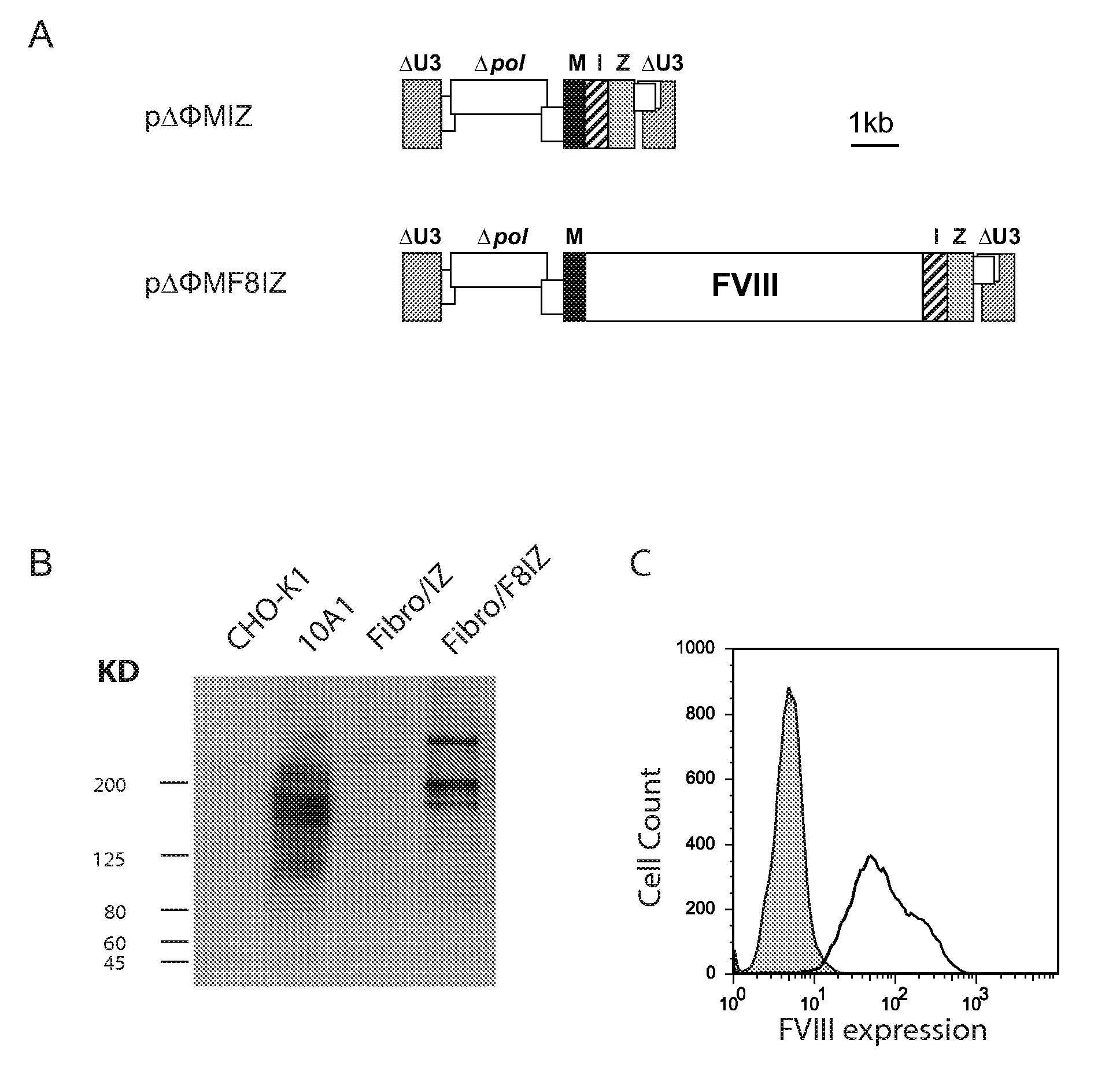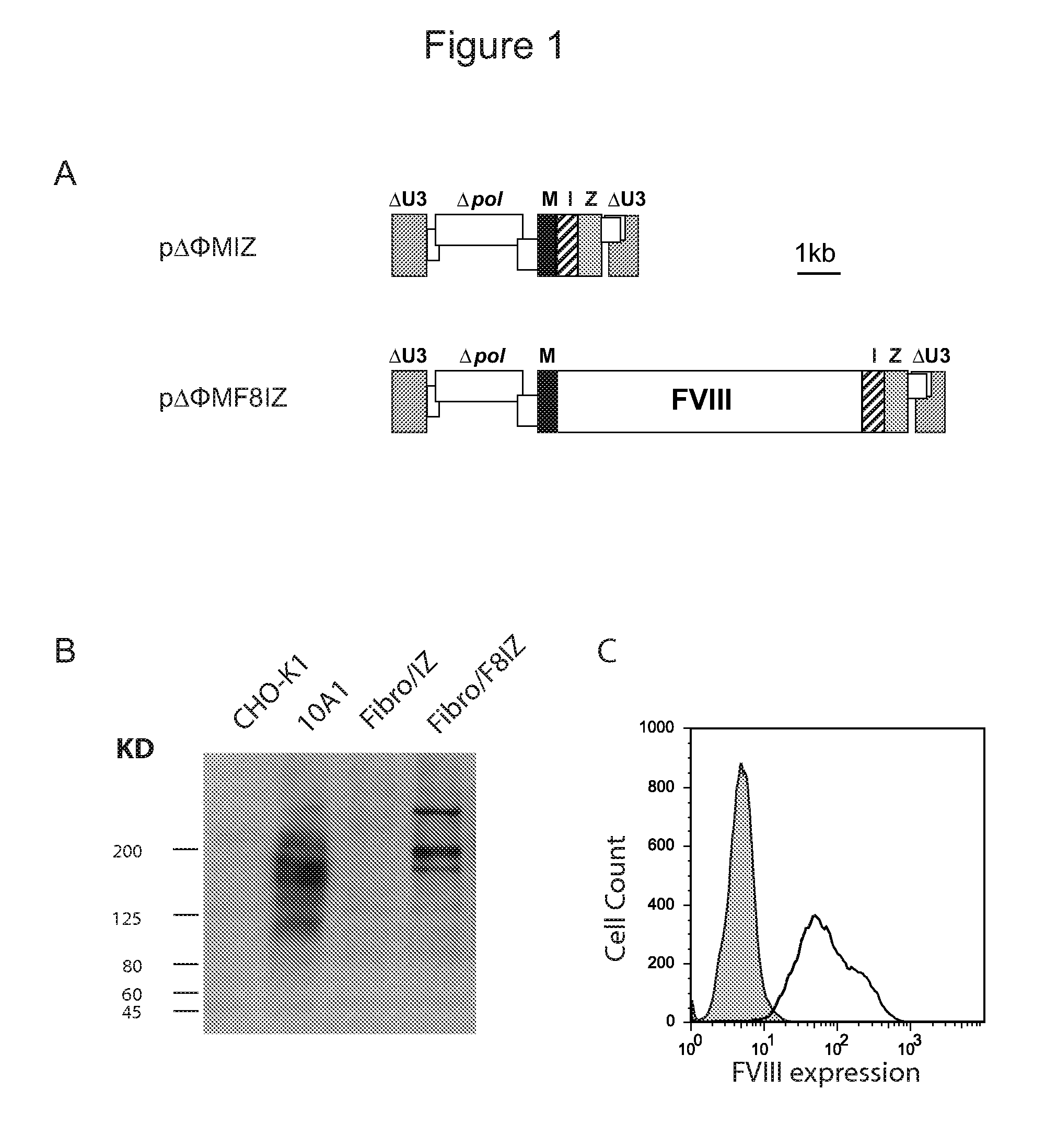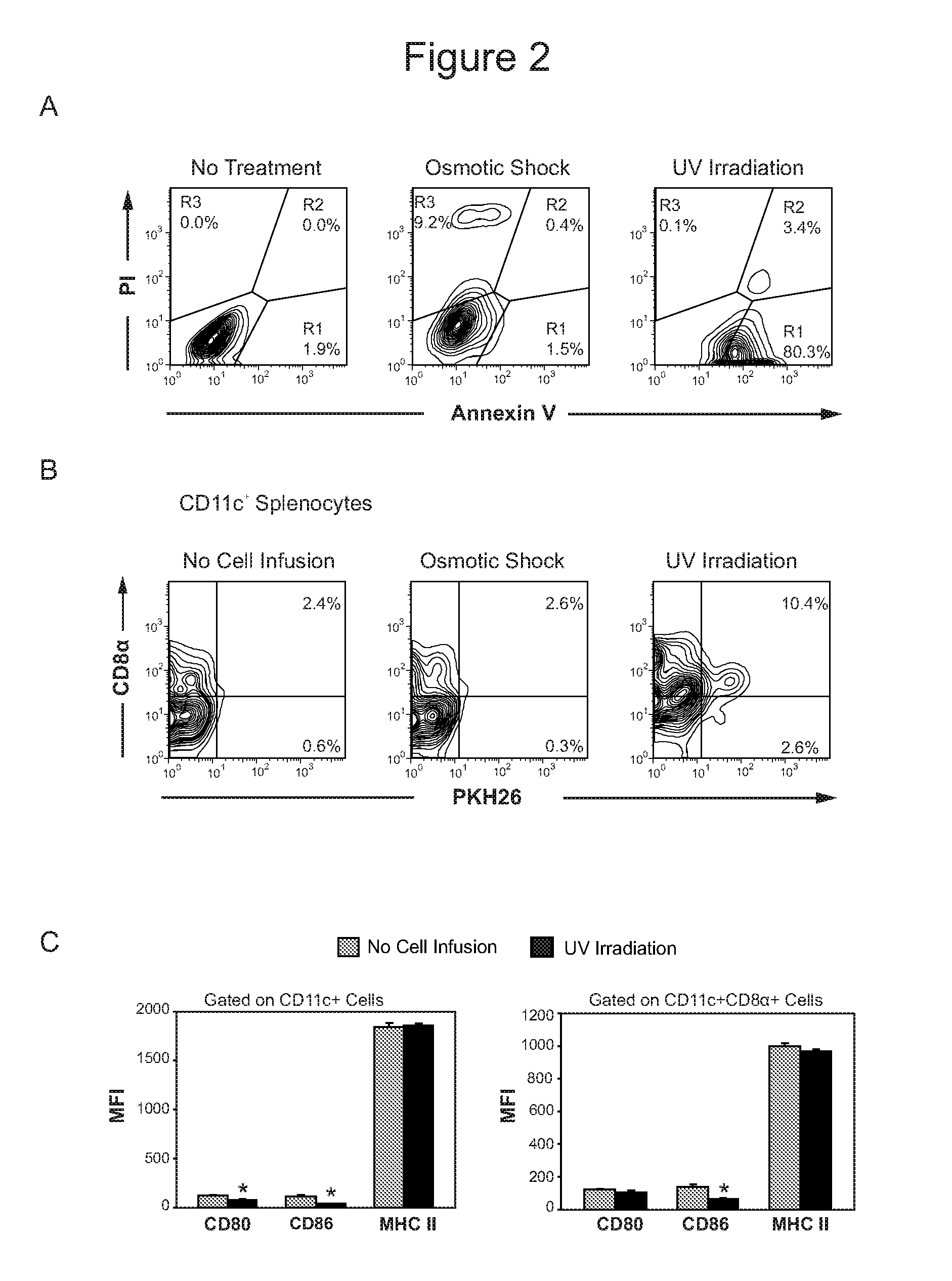Suppression of immune response to factor viii in hemophilia a patients
a technology of immune response and hemophilia a, which is applied in the field of suppressing an immune response to factor viii, can solve the problems of ineffective control of bleeding episodes, inability to use fviii concentrates, and high cost of bypass factors , to achieve the effect of controlling bleeding episodes, and the use of fviii concentrates in long-term prophylaxis regimens is limited
- Summary
- Abstract
- Description
- Claims
- Application Information
AI Technical Summary
Benefits of technology
Problems solved by technology
Method used
Image
Examples
example 1
Materials and Methods
Animals
[0098]Studies were performed on 8-12 week old exon 16 knockout (KO) hemophilia A mice in the 129SV background strain (Bi et al., Nat Genet; 10: 119-121 (1995); Bi et al., Blood; 88:3446-3450 (1996)). Mice were housed under specific pathogen-free conditions in a University of Washington animal facility and studied in accordance with an Institutional Animal Care and Use Committee (IACUC) approved protocol. Blood was obtained by cardiac puncture or tail nick, anticoagulated with 0.1 M sodium citrate at a 9:1 (vol / vol) ratio. Plasma and serum samples were isolated immediately after blood draw and were stored at −80° C. until analyzed.
Foamy Virus Vector Constructs and hFVIII Expressing Fibroblasts
[0099]The pΔΦMscvF8IZ and control pΔΦMscvIZ vectors were generated using standard molecular cloning techniques (see e.g., Sambrook et al.) using the cDNA encoding full-length human FVIII from the PMT2-VIII vector (Pittman and Kaufman, Proc Natl Acad Sci USA; 85:2429-2...
example 2
Establishment of a FVIII Transgene-Expressing Fibroblast Cell Line
[0110]A fibroblast cell line was generated from a tail snip of a FVIII KO mouse (Lander et al., J Natl Cancer Inst; 60:477-478 (1978)). Fibroblasts were transduced with a bicistronic foamy virus vector expressing full length human FVIII (ΔΦMscvF8IZ) or a control vector (ΔΦMscvIZ), and the cells were placed under zeocin drug selection. FIG. 1A shows foamy virus vectors ΔΦMIZ and ΔΦMF8IZ that contain the murine stem cell virus promoter (M), an internal ribosomal entry site (I) and the zeocin resistance gene (Z). CHO-K1 cells represent a negative control; 10A1 cell line are CHO-K1 cells modified to express full-length human FVIII61; Fibro / IZ cells are a fibroblast cell line from 129SV FVIII KO mice transduced with the ΔΦMIZ vector; Fibro / F8IZ cells are the same fibroblast cell transduced with the ΔΦMF8IZ vector. The upper band in both the 10A1 and Fibro / F8IZ cells are uncleaved full-length FVIII and the smaller bands rep...
example 3
Apoptotic Fibroblasts are Selectively Captured by CD8α+ Splenic DCs
[0113]Osmotic shock has been used to generate apoptotic antigen loaded splenocytes capable of inducing tolerance (Liu et al., J Exp Med; 196: 1091-1097 (2002)). However, the same treatment of the fibroblast cell lines produced more necrosis than apoptosis. In contrast, UV irradiation reliably generated apoptosis (>50%) with little necrosis in cells evaluated at 3 hours post treatment (FIG. 2A). FIG. 2A shows Annexin V and PI staining of Fibro / F8IZ cells in culture and after treatment with osmotic shock or UV irradiation. R1 represents early apoptotic cells, R2 represents late apoptotic cells and early necrotic cells, and R3 represents late necrotic cells. Furthermore, PI and trypan blue staining of fibroblasts 24 hours post UV irradiation confirmed that treated cells were not viable (data not shown).
[0114]Splenic DC phagocytosis of PKH26 labeled fibroblasts administered intravenously were tracked following treatment ...
PUM
| Property | Measurement | Unit |
|---|---|---|
| Fraction | aaaaa | aaaaa |
| Fraction | aaaaa | aaaaa |
| Fraction | aaaaa | aaaaa |
Abstract
Description
Claims
Application Information
 Login to View More
Login to View More - R&D
- Intellectual Property
- Life Sciences
- Materials
- Tech Scout
- Unparalleled Data Quality
- Higher Quality Content
- 60% Fewer Hallucinations
Browse by: Latest US Patents, China's latest patents, Technical Efficacy Thesaurus, Application Domain, Technology Topic, Popular Technical Reports.
© 2025 PatSnap. All rights reserved.Legal|Privacy policy|Modern Slavery Act Transparency Statement|Sitemap|About US| Contact US: help@patsnap.com



